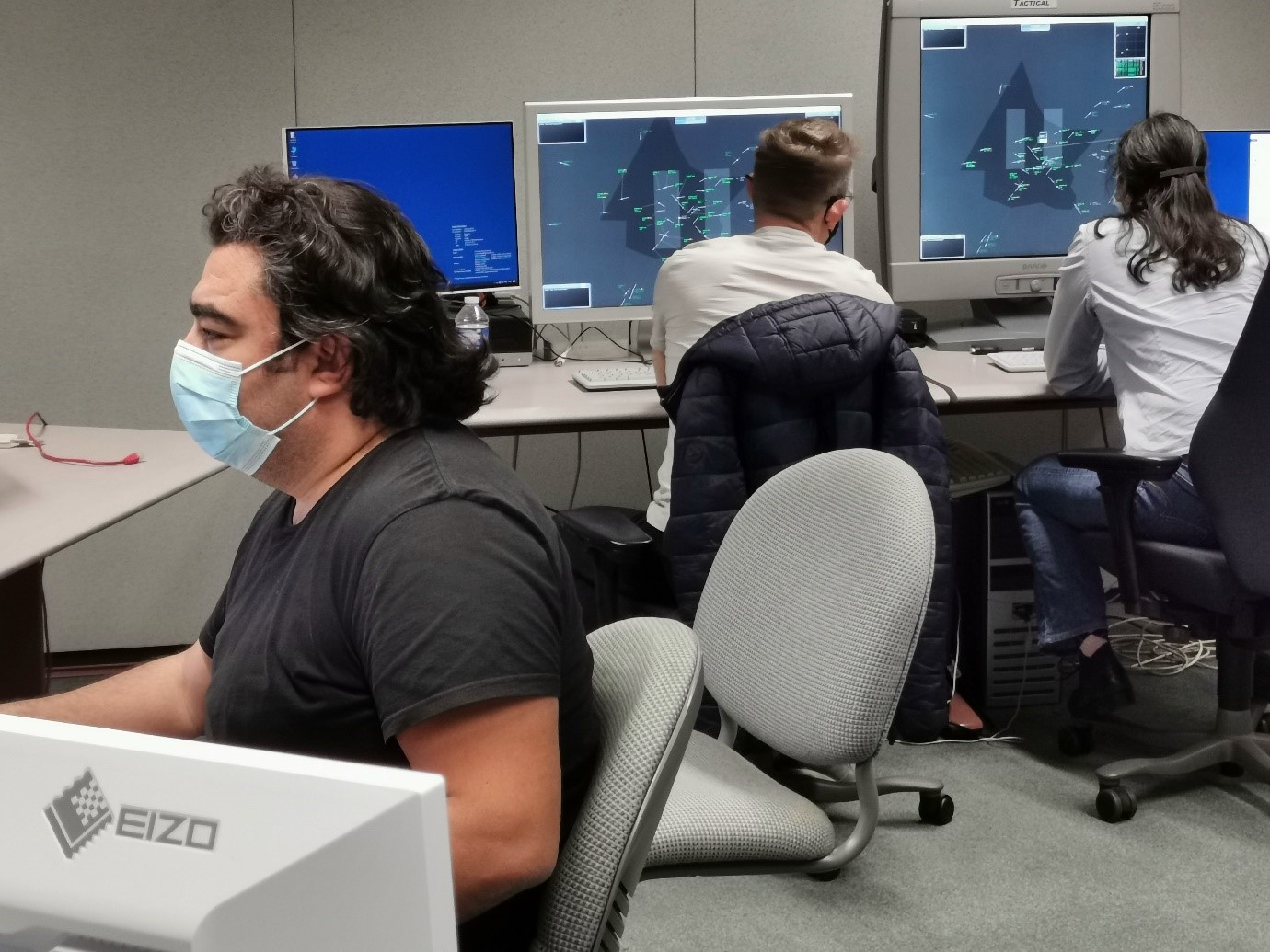SESAR researchers are validating complex controller-pilot data link clearances in an effort to improve air traffic predictability and get the most out of Europe’s airspace. In this article, Dan Ivanescu (EUROCONTROL) Solution Leader from the SESAR 4DSkyways project, explain the approach and provide feedback from the first series of real-time simulations.
Controller-pilot data link communications, CPDLC, allow for a fast exchange of text messages via data link between air traffic controllers and pilots. The advantages to this form of communication over traditional voice communications are manifold: it reduces the risk of misunderstandings and allows controllers to deal with requests simultaneously.
Although the technology allows for a wide array of messages to be exchanged, currently only the simplest kind are used in the day to day operations. Moreover multiple tactical instructions are issued with a limited use of CPDLC (reduced to simple clearances), not optimized automation support with no automated check of air-ground trajectories consistency.
This is where the SESAR Solution #56 (part of EUROCONTROL-led SESAR Joint Undertaking 4DSkyways project) comes in; it is preparing for the roll-out of “complex” CPDLC clearances (most of the time multi – element clearances) sent in advance that allow for a trajectory revision in the horizontal, vertical or longitudinal domain; this will enhance the synchronisation of the airborne trajectory with the ground trajectory. Once approved by the flight crew, these new clearances will be auto-loadable in the aircraft on-board computer. This approach aims to keep the flight crew in full control, while reducing their workload and the potential for human error, thus increasing safety, decreasing trajectory uncertainty and optimising use of the airspace.
The introduction of these new clearances along with specific operational procedures entails a fundamental change to the ATM system, both on-board and on the ground.
To validate the solution, six real-time simulation exercises took place, two of which are described below:
PJ.18-W2-56-EXE001
Conducted by EUROCONTROL, AIRBUS, Thales AVS France, COOPANS and Polish Air Navigation Services Agency (PANSA), the exercise explored the use of the abovementioned complex clearances to anticipate trajectory changes and to synchronise the air and ground views, supported by an increased level of automation on the ground system enhanced with the ADS-C downlinked data.
In July, the EUROCONTROL team together with air traffic controllers from PANSA and COOPANS Alliance/Naviair, conducted a first phase of simulations, obtaining a significant level of acceptance among the controllers and noting the following:
- The planning controller takes care of advance clearances, which improves controller task sharing and reduces the executive controller’s workload, therefore increasing capacity and predictability
- An extended planner position was defined and in charge with trajectory modification in advance, impacting all the simulated sectors
- Complex CPDLC clearances given in advance to the downstream sectors using controller-pilot datalink communication standards can represent a significant shift from today’s operations of tactical control by reducing open loop interventions.
In the next phases, Airbus and Thales AVS France will enrich the validation by running with real time connection an accurate cockpit simulator based scenarios looking at the relevance of the existing implementation of the datalink function to support the flight crew in managing these clearances.

